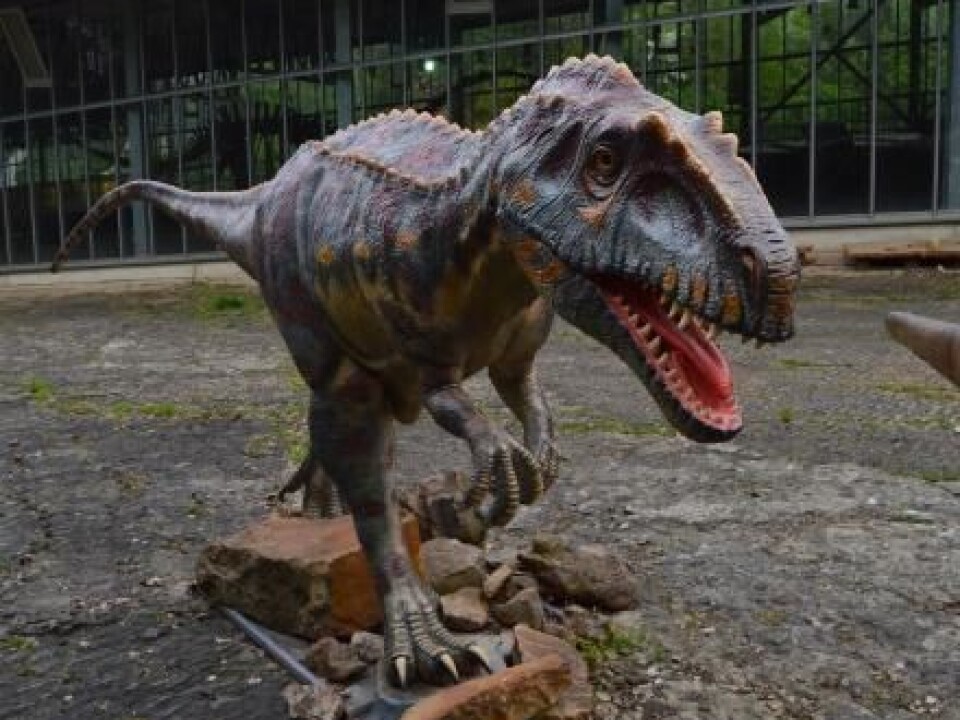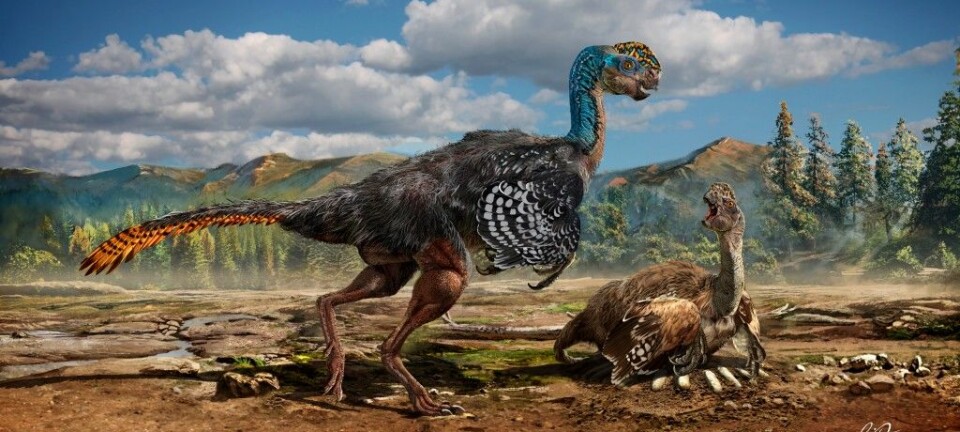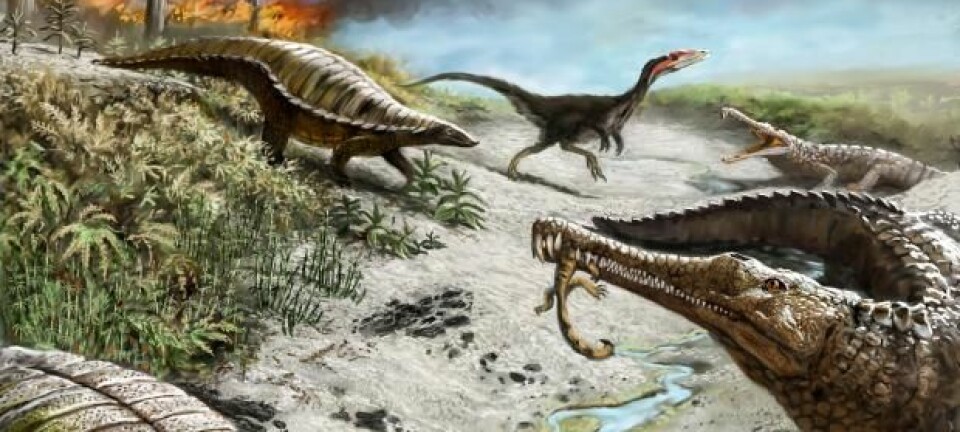
What 142 million year old footprints reveal about dinosaur behaviour
Two sets of fossilized dinosaur footprints on a beach in Germany provide insights into the ancient giants' behaviour.
142 million years ago, two dinosaurs went for a stroll along the German coast, and left behind footprints in the wet sand on the seashore.
These now fossilised footprints provide a surprising amount of information about the dinosaurs that left them--one dinosaur was quite small, trying to keep up with a larger dinosaur that calmly strolled along the beach.
Palaeobiologist Pernille Venø Troelsen from the University of Southern Denmark led the research after being granted permission to study the 30 metre long track as part of her recent master's thesis.
Troelsen calculated the precise speed of the two dinosaurs as they walked on the coast--the little dinosaur, called T2, ambled along at a speed of 9.7 kilometres per hour, while the large dinosaur calmly strolled along at a pace of 6.3 kilometres per hour.

"My theory is that the little dinosaur is most likely following behind the larger one, and therefore had to put in a bit more effort to keep up. It would have been almost jogging to keep pace,” she says.
“But we do not actually know for sure whether they were there at the same time. In palaeontology, one can never be 100 per cent sure of anything, but it’s a great scenario to picture: two dinosaurs walking together along the shore," says Troelsen, who is now preparing the study for publication in a scientific journal.
Modern predators help us understand the dinosaurs
To investigate the dinosaur speed Troelsen digitally measured the stride length and track depth and made a number of 3D models. These digital measurements were significantly more accurate than the previously available measurements of the footprints, which were made by hand.
Troelsen then studied the tracks of contemporary predators to see how they compared with the 3D models of the ancient dinosaur prints.
Casts of modern predator tracks show how the animals move in various situations. For example, when hunting they push their weight onto the front of their feet, tippy toeing up to their prey. When they are not hunting, they are more likely to walk in a slow, relaxed way, and leave deeper footprints.
Based on this, Troelsen quickly concluded that the dinosaurs had not been out hunting, as their tracks were relatively deep.
Fossilized footprints around the world
Palaeontologist Dr Jesper Mílan, curator at the Geoscience Museum in Faxe, Denmark, supervised the project. Milan studies many different fossilized footprints from around the world. He has excavated another set of footprints in North America, where he could see how a dinosaur had been walking along before sitting down to take a rest, and then getting up once again to continue its promenade.
"It provides a unique snapshot of the animal's life when we find these tracks," says Mílan.
Many such tracks have also been discovered on the Danish island of Bornholm, in the Baltic Sea. Here a group of herbivorous dinosaurs like Sauropods also known as ‘long necks’ have been discovered.
These tracks, together with similar Sauropod tracks elsewhere showed how the dinosaur feet were rounded in shape--similar to modern day elephants and rhinoceros. This allowed them to walk given their enormous weight.
-------------------
Read the Danish version of this article on Videnskab.dk
Translated by: Catherine Jex









